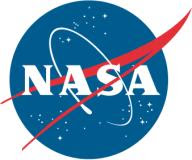NASA Student Airborne Research Program Takes Flight EDWARDS, Calif., July 23 /PRNewswire-USNewswire/ -- Twenty-nine undergraduate and graduate students are participating in a six-week NASA Airborne Science field experience designed to immerse them in NASA's Earth Science research. The students represent 26 colleges and universities across the U.S. and nine foreign countries.
EDWARDS, Calif., July 23 /PRNewswire-USNewswire/ -- Twenty-nine undergraduate and graduate students are participating in a six-week NASA Airborne Science field experience designed to immerse them in NASA's Earth Science research. The students represent 26 colleges and universities across the U.S. and nine foreign countries.
(Logo: http://www.newscom.com/cgi-bin/prnh/20081007/38461LOGO )
NASA's Student Airborne Research program runs from July 6 to Aug. 14 in California. The program began with lectures from university faculty members, research institutions and NASA scientists at the University of California, Irvine. One of the speakers is Sherwood Rowland of the University of California, Irvine, a Nobel Laureate in chemistry, who is a long-time user of NASA's DC-8 airborne capabilities for his research on atmospheric chemistry.
Using the DC-8 flying laboratory based at NASA's Dryden Aircraft Operations Facility in Palmdale, Calif., the students will get a rare behind-the-scenes look at instrument integration, flight planning and payload testing that is the basis of every successful Earth Science airborne campaign carried out by NASA. These airborne research campaigns play a pivotal role in the calibration and validation of NASA's space-borne Earth observations, remote sensing measurements and the high-resolution imagery for Earth system science.
Divided into the investigative groups of atmospheric science, algal blooms and crop classification, students will have the opportunity to fly aboard one of two six-hour DC-8 flights departing from NASA's Palmdale facility. The aircraft will travel north over the San Joaquin Valley for an air-quality investigation, over the Sacramento-San Joaquin River Delta to observe vegetation, and south over Monterey Bay to research algae blooms.
The student program is one of NASA's tools for training future scientists for Earth Science missions that can assist with studies and the development and testing of new instruments and future satellite mission concepts. The program's goal is to stimulate interest in NASA's Earth Science research and aid in recruitment of the next generation of engineers and scientists. Through this and the agency's other college and university programs, NASA is developing critical skills and capabilities needed for the agency's engineering, scientific and technical missions.
The Student Airborne Research Program is managed through the National Suborbital Education and Research Center at the University of North Dakota, with funding and support from NASA's Airborne Science Program. The center was established through a cooperative agreement between the University of North Dakota and NASA.
For additional information about NASA's DC-8, visit:
http://www.nasa.gov/centers/dryden/aircraft/DC-8/index.html
For more information about NASA's Education programs, visit:
http://www.nasa.gov/education
For additional information about the National Suborbital Education and Research Center at the University of North Dakota, visit:
http://www.nserc.und.edu
![]()


0 comments for this post